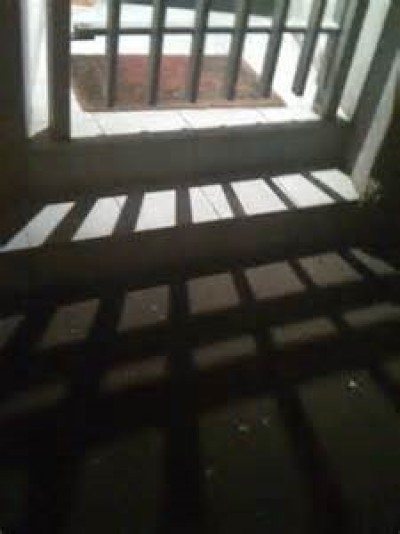Course description
Diffraction is the slight bending of light as it passes around the edge of an object (Fig. 26). In the atmosphere, diffracted light is actually bent around atmospheric particles - most commonly, the atmospheric particles are tiny water droplets found in clouds (Figs 26 b, c).
(a) (b) (c)
Fig 26
Fig. 27 (a) shows a plane wave is incident on a long slit of infinitesimal width a. According to geometrical optics, only the region PQ of the screen which is of the same dimension as the slit and directly opposite to it, will be illuminated. The rest of the screen will remain absolutely dark and is known as the geometrical shadow. However, on careful observation it will be found that if the width of the slit is not very large compared to the wavelength of light used, some light energy will encroach into the region of geometrical shadow as shown in Fig. 27 (b).
Fig 27
Moreover, the illumination outside of the geometrical shadow is not uniform, it shows rhythmic variations in intensity (Fig. 27 b). As the width of the slit is made smaller and smaller, this encroachment of light into the geometrical shadow becomes larger and larger (Fig. 28). Therefore, diffraction refers to the apparent bending of waves around small obstacles and the spreading out of waves past small openings (Fig. 29). Wave theory of light can explain this kind of bending of waves (light(Fig. 27 b). As the width of the slit is made smaller and smaller, this encroachment of light into the geometrical shadow becomes larger and larger (Fig. 28). Therefore, diffraction refers to the apparent bending of waves around small obstacles and the spreading out of waves past small openings (Fig. 29). Wave theory of light can explain this kind of bending of waves (light).
Fig 28
The diffraction phenomena are usually divided into two categories known as (i) Fraunhofer diffraction and (ii) Fresnel diffraction.
Fraunhofer diffraction: In this class of diffraction, the source of light and the screen are at infinite distances from the diffracting aperture. In practice this is achieved by placing the source at the focal plane of a convex lens and placing the screen on the focal plane of another convex lens (Fig. 30).
Fig 29
Fresnel diffraction: In this class of diffraction, the source of light, or the screen or both are at finite distance from the diffracting aperture (Fig. 31). No lens are employed here for rendering the light beam parallel or convergent.
Figs 32-34 show the formation of Fresnel and Fraunhofer diffraction pattern respectively. Fig 30
Figs 35-39 show the formation of single and double slit patterns.
Plane diffraction grating:
The Figs. 40-44 are for plane diffraction grating. A plane diffraction grating is an arrangement consisting of a large number of close, parallel, straight, transparent and equidistant slits, each of equal width a, with neighboring slits being separated by an opaque region of width b. A grating is made by drawing a series of very fine, equidistant and parallel lines on an optically plane glass plate by means of a fine diamond pen. The light cannot pass through the lines drawn by diamond; while the spacing between the lines is transparent to the light. There can be 15,000 lines per inch or more is such a grating to produce a diffraction of visible light. The spacing (a + b) between adjacent slits is called the diffraction element or grating element. If the lines are drawn on a silvered surface of the mirror (plane or concave) then light is reflected from the positions of mirrors in between any two lines and it forms a plane concave reflection grating.
Physical Optics
Q1. What are the ideas in the wave theory of light?
Q2. Define wave front with figure.
Q3. State Huygens’ Principle with a figure.
Q4. Explain the Principle of superposition.
Q5: What is meant by Interference of light?
Q6. Explain the constructive and destructive interference with figure.
Q7. Define Coherent sources.
Q8. Describe the condition of constructive and destructive interference by analytical treatment.
Q9. Drive an expression for the width of a fringe of interference.
Q10. How do you get the coherent sources from constant and varying thickness films?
Q11. Show that Fresnel bi-prism experiment satisfied the condition of interference.
Q12. How can you produce Newton’s rings?
Q13. Describe the Newton’s rings method of measuring wavelength of monochromatic light.
Q14. Determine the radius of curvature of the lens by using Newton’s rings theory.
Q15. What is diffraction? Give examples.
Q16. Distinguish between the Fresnel and Fraunhofer Classes of diffraction.
Q17. What is plane diffraction grating?
Q18. Write the construction of plane diffraction grating.
Q19. Distinguish between the diffraction grating and reflection grating.


















